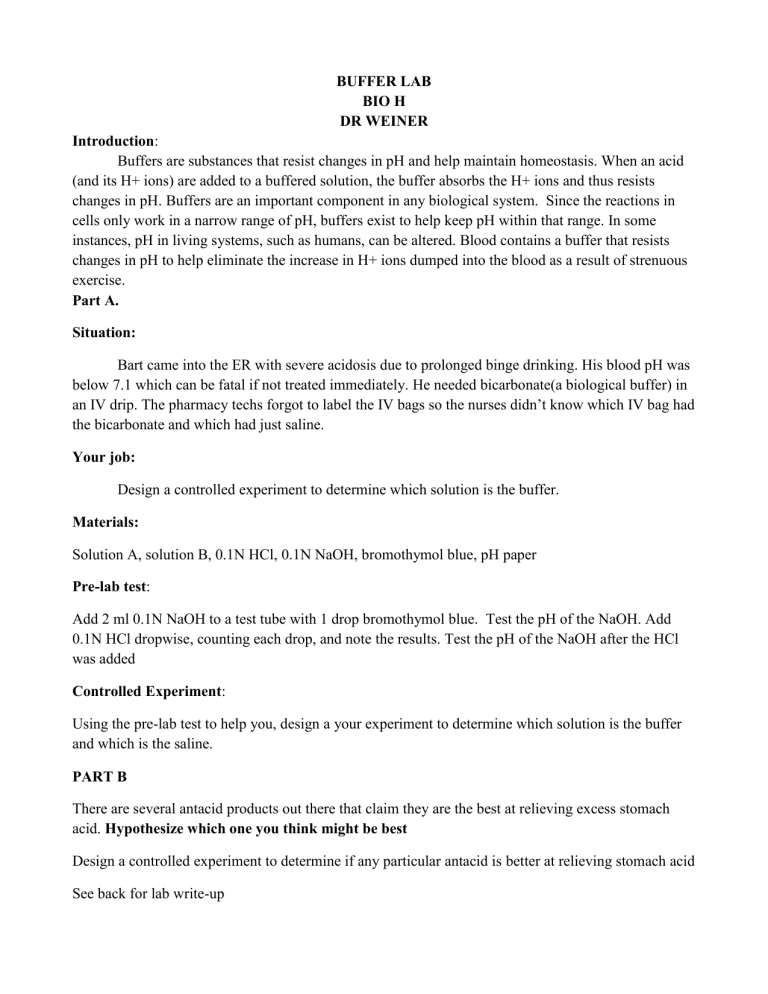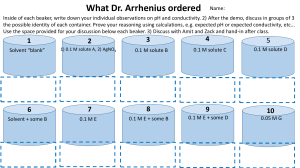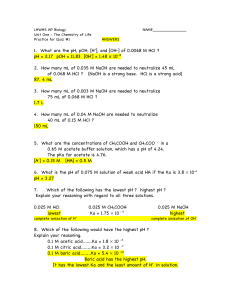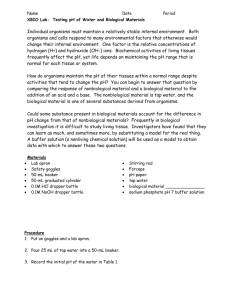BUFFER LAB BIO H DR WEINER Introduction: Buffers are

BUFFER LAB
BIO H
DR WEINER
Introduction :
Buffers are substances that resist changes in pH and help maintain homeostasis. When an acid
(and its H+ ions) are added to a buffered solution, the buffer absorbs the H+ ions and thus resists changes in pH. Buffers are an important component in any biological system. Since the reactions in cells only work in a narrow range of pH, buffers exist to help keep pH within that range. In some instances, pH in living systems, such as humans, can be altered. Blood contains a buffer that resists changes in pH to help eliminate the increase in H+ ions dumped into the blood as a result of strenuous exercise.
Part A.
Situation:
Bart came into the ER with severe acidosis due to prolonged binge drinking. His blood pH was below 7.1 which can be fatal if not treated immediately. He needed bicarbonate(a biological buffer) in an IV drip. The pharmacy techs forgot to label the IV bags so the nurses didn’t know which IV bag had the bicarbonate and which had just saline.
Your job:
Design a controlled experiment to determine which solution is the buffer.
Materials:
Solution A, solution B, 0.1N HCl, 0.1N NaOH, bromothymol blue, pH paper
Pre-lab test :
Add 2 ml 0.1N NaOH to a test tube with 1 drop bromothymol blue. Test the pH of the NaOH. Add
0.1N HCl dropwise, counting each drop, and note the results. Test the pH of the NaOH after the HCl was added
Controlled Experiment :
Using the pre-lab test to help you, design a your experiment to determine which solution is the buffer and which is the saline.
PART B
There are several antacid products out there that claim they are the best at relieving excess stomach acid. Hypothesize which one you think might be best
Design a controlled experiment to determine if any particular antacid is better at relieving stomach acid
See back for lab write-up
LAB WRITE-UP:
Part A.
Purpose
Materials
Your procedure
Data tables
Conclusions with explanations
Part B.
Purpose
Hypothesis
Materials
Your procedure
Data tables
Conclusions with explanations
Was your hypothesis correct?











